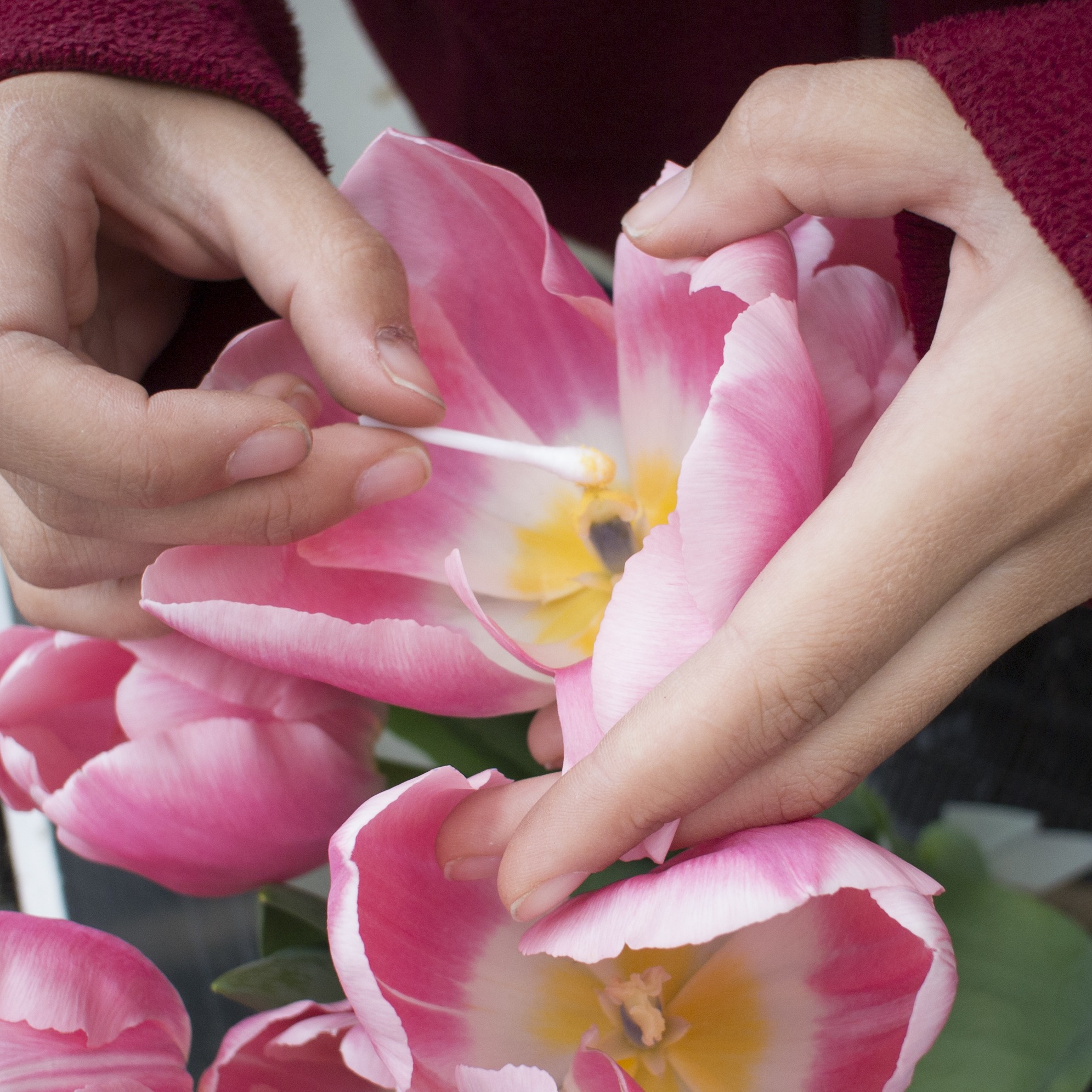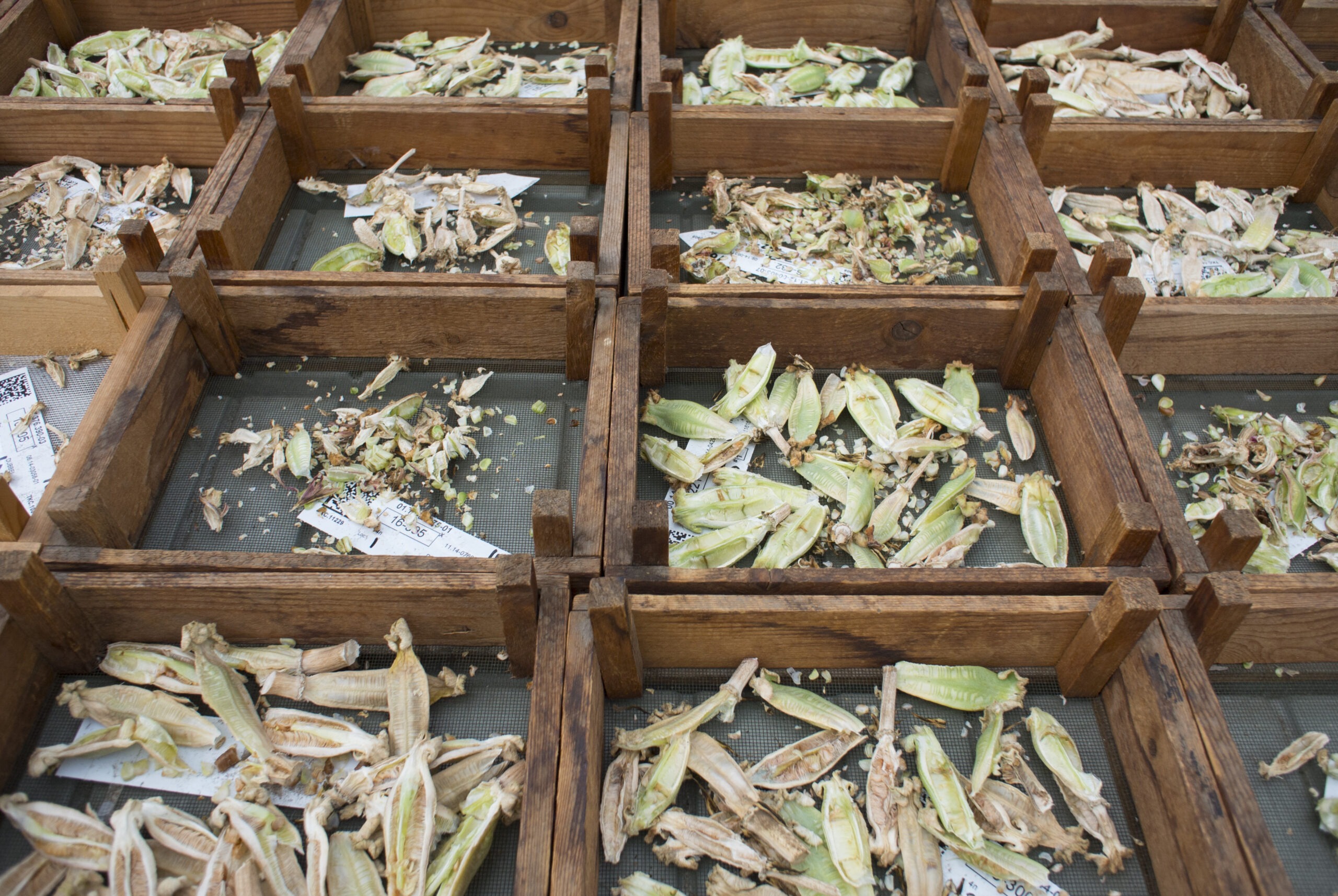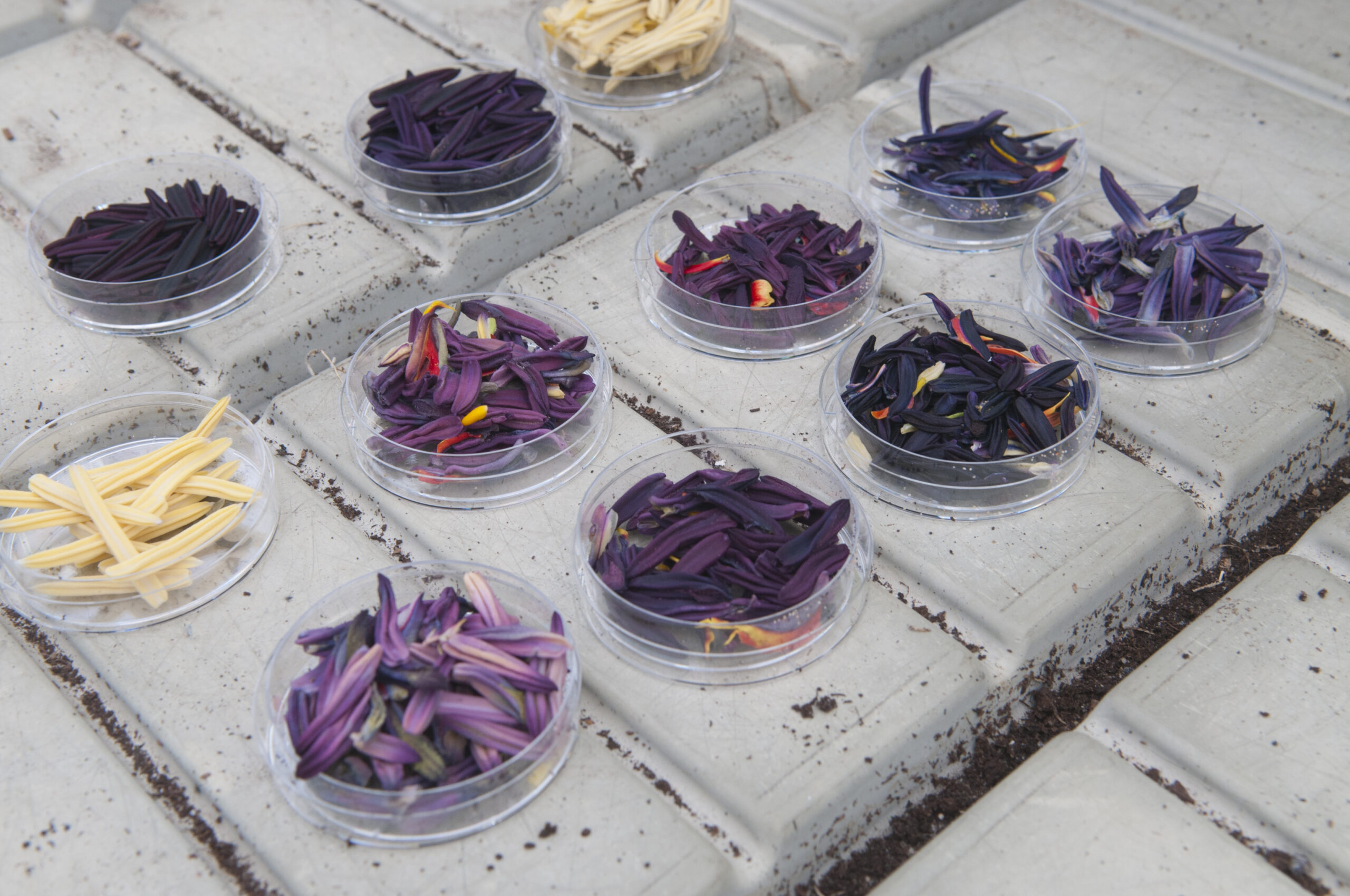The future of the tulip!
The flower bulb sector is working hard to reduce chemical crop protection products. It is not news that this makes virus control an increasingly greater challenge. In tulip cultivation, TBV (Tulip Breaking Virus) and TVX (Tulip Virus X) are the most common viruses. TBV is transmitted by aphids and TVX by mites. Cultivars that have resistance bred into them no longer need to be sprayed, bringing sustainable cultivation closer.
Spread of plant viruses
Plant viruses are spread by animals that feed on plant sap and therefore often have a snout like a stiletto. The most well-known is the aphid. It pierces a leaf or stem, thus spreading the virus. Flying aphids are particularly efficient. And because aphids are everywhere, there is no virus-free cultivation, garden, or park. Often such a virus does not harm the plant; it is just a carrier, but frequently the growth of an infected plant visibly declines.
The Dutch flower bulb sector originated in the 17th century on the old sandy soils directly behind the dunes and the North Sea. That’s not accidental. Precisely along this coastal strip, the pressure of aphids, due to the always blowing sea wind, is much lower than further inland and in Europe. However, precisely these aphids and virus spread there behind the dunes caused the first financial disaster in the world. Investors invested ‘money & possessions’ in a virus-infected flower bulb that no longer grew and was never harvested.
Virus-resistant tulips at Verver Export
In the Netherlands, a small 17,000 hectares of spring-flowering flower bulbs are cultivated in 2023-2024, of which approximately 13,000 hectares are tulips. On average, 10,000 kilograms of tulip bulbs are harvested per hectare (approximately 170 per square meter). These figures show how important tulip cultivation is for the Dutch flower bulb sector. Most of the tulip bulbs grown are used for the cut flower trade, with only a small percentage ending up in gardens and parks.
Since 2023, Verver Export also has the first virus-resistant tulips in its catalog. The number will increase again in the new catalog in 2025. These cultivars come from the breeding stall of IJsbrand de Jong. In 1996, De Jong made his first crosses aimed at introducing resistance to TBV and TVX. De Jong quickly saw results. From a cross between a tetraploid tulip and Tulipa fosteriana ‘Princeps’, he obtained no fewer than forty seeds, which produced red and yellow seedlings. One of them was ‘Novi Sun’, which now covers an area of 75 hectares and has TBV resistance and is also insensitive to TVX and to August disease. The disadvantage of this cross was the sterility of the offspring. By choosing a different route, he found an orange seedling that turned out to be fertile and TBV resistant. He then crossed with this. A number of selections from these crosses have names, such as ‘Kunyun’ and ‘Milatz’, both of which are insensitive to TBV.
Virus resistance is tested with a field test, by putting the selections between a fully affected batch. Fusarium testing is done with a barn test by keeping selections in a warm, humid space and applying Fusarium spores from infected bulbs for storage.
Modern techniques
In addition to viruses, however, there are other diseases such as: sourness (Fusarium oxysporum f.sp. tulipae) and Botrytis. Breeding resistance to all three is not easy. With modern techniques, Wageningen University & Research (WUR) has been working on a genetic map with markers indicating resistance to certain diseases since the turn of the century. Using these markers, tulips can be selected more quickly with specific attention to certain resistances. Markers are variations in the DNA that happen to be linked to a gene. By selecting plants with the right combination of markers, resistance is indirectly selected. This is especially useful for replacing, for example, labor-intensive disease tests or for quantitative resistance because resistance can then be predicted based on a single seedling instead of multiple genetically identical plants. In the future, we will learn more and more about the genome of plants and about the patterns in the DNA code of resistance genes. We can then select directly on them.
The challenge in the sector now lies in breeding for resistance to other flower bulb crops.



Breeding is a matter of patience
Breeding tulips requires patience. A cross takes four years to bloom. Then you select one bulb to continue with. If it has the positive traits you are looking for, it will take another fifteen years before you have a hectare full. So, you will be busy for about twenty years before you can bring something to market. We are now seeing the first results from breeders who started breeding for resistance up to 25 years ago coming onto the market. In addition, there are younger breeders who are now also introducing the first virus-resistant tulips and other bulb crops.
Furthermore, there are also initiatives to (affordably) accelerate the propagation of tulip bulbs using modern laboratory techniques.
History of virus & tulips
In the 17th century, during the tulip craze (when you could buy a canal house for ten tulip bulbs), tulips with flamed and striped flowers were valued. It wasn’t until 1928 that scientists discovered that these flames and stripes were caused by the mosaic virus. Those decorative tulips were sick. When you pass a field of blooming tulips, you sometimes see people walking along the tulip beds with a focused gaze, as if they have lost their watch. These are ‘sick searchers’, whose task it is to detect and remove infected tulips. Meanwhile, the first ‘sick-search robots’ are already driving over the tulip fields. Using artificial intelligence, viruses are recognized, and the infected tulip is destroyed. Flamed tulips still exist. They are called ‘Rembrandt tulips’, although the best Rembrandt never painted a tulip in his life. These tulips are not sick but have arisen through selection.
Terminology
Resistance: the plant cannot become ill from a pest.
Tolerance: the extent of damage a pest does to a crop.
Susceptibility: the extent to which a plant becomes ill from a pest.

